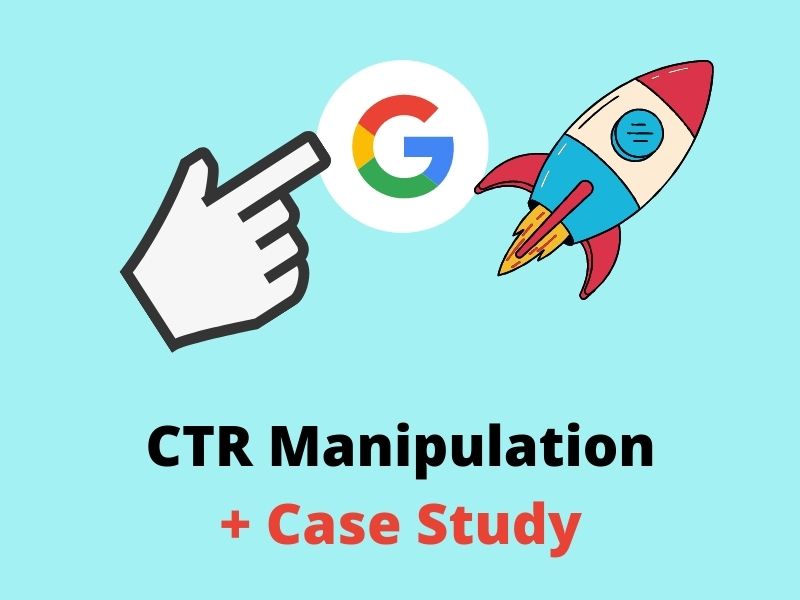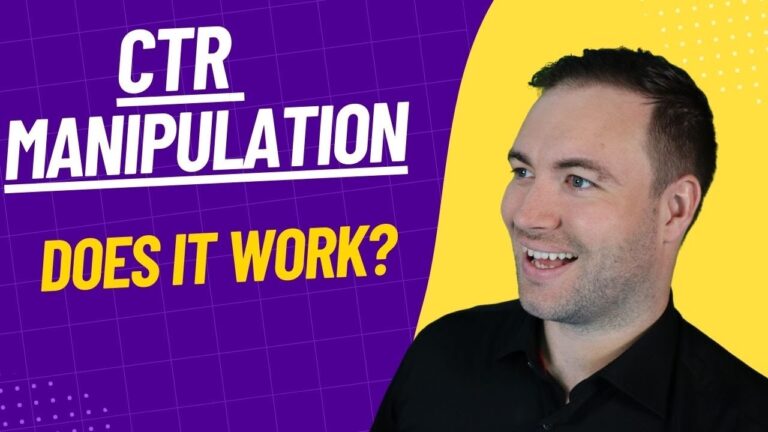Mastering CTR Adjustment: A Guide to Higher Search Engine Results
In the digital landscape, grasping CTR control can be a game-changer for achieving popular internet search engine results. By skillfully crafting elements such as meta titles, summaries, and web content, marketing experts can influence user behavior and drive natural traffic to their sites. The critical use power words, numbers, and contacts us to action can dramatically influence CTR, pushing on-line visibility and conversions. However, real art depends on the analysis and change of these tactics utilizing tools like Google Analytics and warmth mapping, which can reveal very useful understandings for boosting internet search engine performance.
Comprehending Click-Through Rate (CTR)
Recognizing the Click-Through Rate (CTR) is crucial for enhancing electronic marketing approaches. CTR is a crucial metric that measures the percent of people who click a particular link after seeing it. In the world of digital advertising and marketing, CTR holds enormous relevance as it directly influences the efficiency of on-line projects. By examining CTR information, marketers can assess the efficiency of their advertisements, e-mails, and various other digital web content. A high CTR suggests that the web content reverberates well with the target market and is engaging enough to drive involvement. As a matter of fact, a reduced CTR signals that modifications are required to improve the material and draw in more clicks.
By keeping track of CTR fads over time, marketing experts can recognize patterns, preferences, and actions of their audience. In essence, a deep understanding of CTR equips marketing experts to make data-driven choices that lead to extra reliable digital advertising campaigns.
Importance of CTR in SEO
Have you ever took into consideration the critical function Click-Through Price (CTR) plays in enhancing search engine optimization performance? CTR is an important statistics in the world of search engine optimization as it straight impacts a web site's visibility and position on search engine results web pages (SERPs) Look engines like Google make use of CTR as a signal to establish the significance and quality of an internet site's web content. A high CTR shows that users locate the site's title and meta summary appropriate and engaging to their search queries, which subsequently signals to online search engine that the internet site is an important resource for customers.
Furthermore, a high CTR can lead to boosted natural web traffic, as even more customers clicking a website's web link implies even more site visitors being directed to the website. This increase in website traffic can possibly cause higher conversion prices, even more leads, and inevitably enhanced company end results. Therefore, tracking and maximizing CTR must be an essential aspect of any search engine optimization strategy to enhance online presence and drive natural development.
Techniques to Improve CTR

One more efficient approach is to conduct A/B testing on meta tags, headlines, and other elements to establish which combinations resonate ideal with the target market. Tracking and examining user habits with devices like Google Analytics can provide beneficial insights into individual preferences and behaviors, enabling changes to be made accordingly.
Additionally, enhancing internet site filling speed and making sure mobile responsiveness are critical for lowering bounce prices and enhancing CTR. By supplying a smooth individual experience, site visitors are much more likely to involve with the web content and click through to various other web pages. Executing these strategies can assist enhance CTR and eventually enhance search engine outcomes.
Devices for CTR Evaluation
These devices provide beneficial understandings into user behavior, allowing marketers to make data-driven decisions to boost CTR. CTR Manipulation Service. By assessing metrics such as bounce price, average session duration, and pages per session, marketing professionals can identify locations for enhancement to boost CTR.
Another crucial tool for CTR evaluation is Google Browse Console, which supplies useful data on exactly how web sites show up in search results page. Marketing professionals can track CTR for particular keywords, display modifications in search positions, and identify chances to optimize meta tags and descriptions for higher CTR. Furthermore, warm mapping tools like Hotjar or Crazy Egg offer graphes of user communications on internet sites, assisting online marketers understand where customers are clicking and how they browse via the website. By leveraging these devices, marketing experts can acquire important understandings to refine their CTR optimization methods and improve their online search engine outcomes.
Monitoring and Readjusting CTR Strategies
To properly improve search engine optimization performance, continual monitoring and critical adjustments of Click-Through Price (CTR) tactics are crucial for optimizing online exposure and involvement. Keeping track of CTR entails routinely tracking vital metrics such as organic CTR, bounce rate, and ordinary session period to assess the performance of current techniques. Assessing these metrics provides insights right into customer behavior and helps recognize patterns that click for more can guide adjustments for better performance.
When keeping an eye on CTR, it is necessary to pay focus to adjustments in rankings, as they can influence the quantity of natural traffic received. By carefully keeping an eye on CTR information along with sites positions, SEO professionals can determine connections and make notified choices to maximize click-through prices.

Conclusion
To conclude, mastering CTR adjustment is crucial for attaining greater online search engine results. By comprehending the importance of CTR in SEO and applying reliable methods to enhance it, online marketers can drive more natural web traffic and conversions. Utilizing devices for CTR evaluation and continuously monitoring and readjusting strategies based on information insights are vital to improving online exposure and internet search engine performance. Overall, enhancing click-through rates is a critical element of digital advertising and marketing success.
CTR is an important statistics in the realm of search engine optimization as it straight impacts a web site's presence and ranking on search engine results web pages (SERPs) A high CTR shows that users discover the website's title and meta description pertinent and compelling to their search inquiries, which in turn signals to browse engines that the website is an important source for customers.
Another necessary device find here for CTR analysis is Google Browse Console, which supplies beneficial data on exactly how web sites show up in search results. Online marketers can track CTR for certain keywords, screen modifications in search positions, and recognize possibilities to optimize meta tags and descriptions for greater CTR. Checking CTR entails routinely tracking essential metrics such as organic CTR, bounce rate, and typical session duration to examine the performance of existing approaches.